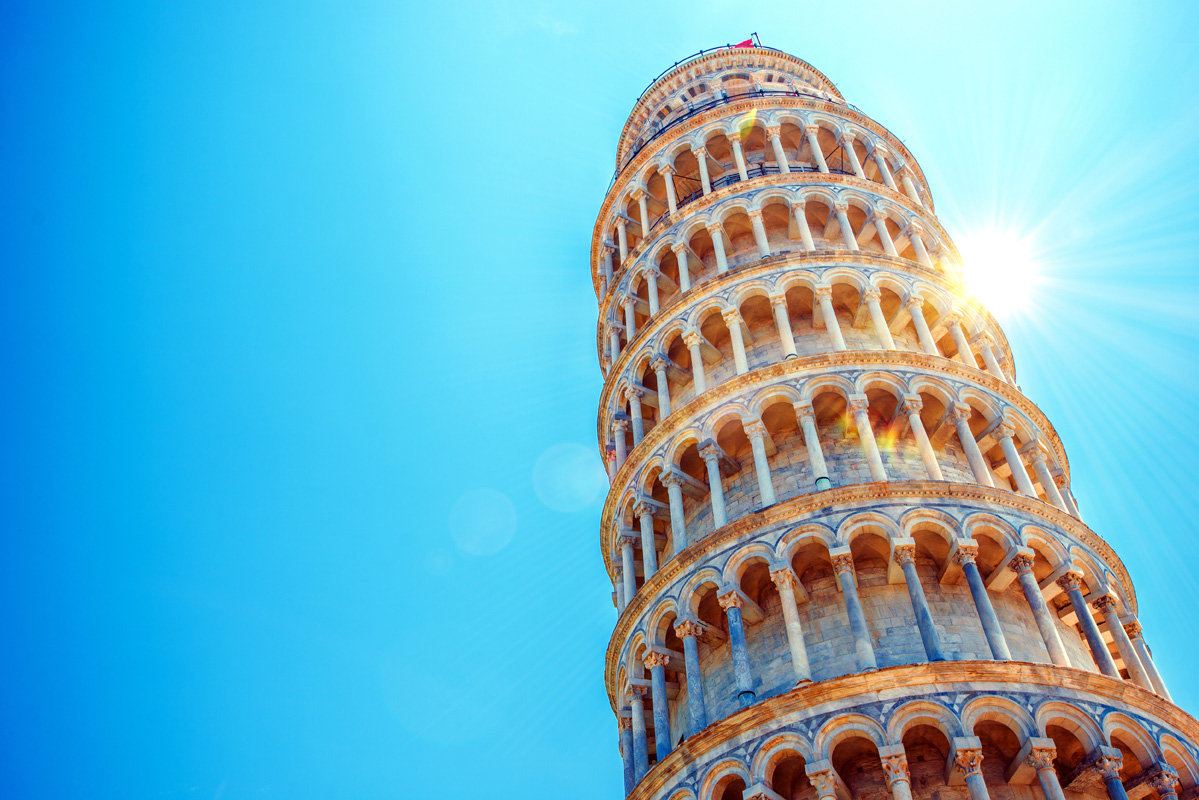The Leaning Tower of Pisa is arguably one of Europe’s most recognisable landmarks – no visit to Italy would be complete without a cheesy photograph of you and your fellow travellers playing with perspective while ‘holding up’ the tower. But what’s the deal with the lean and what was the tower originally intended for? Read on to find out more!
The tower isn’t the only structure in Pisa that leans
The city of Pisa takes its name from the Greek word for ‘marshy land’, which accounts for the fact that there are various structures (and more than one tower!) in the vicinity that sports a jaunty tilt. This includes the St. Michele dei Scalzi bell tower, and the tower at the church of St. Nicola.
Fun fact: The foundation of the Campo Santo cemetery was reinforced with 53 shiploads of soil that was shipped all the way from the Hill of Calvary in Jerusalem.


No-one is completely sure who built it
And it has nothing to do with architectural pride! Due to a very sloppy bit of public record keeping, there is no clear record of who constructed the bell tower. As far as historians can surmise, the first phase of work is accredited to either Bonanno Pisano or Gherardo din Gherardo, while the second phase is the handiwork of Giovani di Simone and Tommaso Pisano completed the structure.


The tower was built with the spoils of war
The Tower of Pisa forms part of the ceremonial complex of monuments along the Piazza dei Miracoli (Square of Miracles), which includes a cathedral, baptistry and monumental cemetery as well. Pisa originally started out as a humble seaport, but became embroiled in various contentious trade agreements and military disputes as the years progresses. In 1063, the Pisans attacked Palermo on the island of Sicily and returned victorious, with quite a bit of treasure. It was decided that a portion of the spoils would pay for a great cathedral complex that would show how important the city was.

The tower leaned pretty much right from the start
The unintended tilt of the freestanding bell-tower of the cathedral of Pisa began just after construction commenced in 1173. Only a third of the way up, builders noticed that the foundations had settled unevenly on soft soil. They tried compensating by building the columns and arches slightly taller on the north side, but political unrest put a stop to construction for almost 100 years. Once the trouble was over building recommenced, but by this time the tilt had worsened – and now the tower leaned to the south.
When it was eventually completed by 1370, the tower leaned about 3 degrees off vertical. And it was getting worse – careful measurements revealed that the tower was moving by about 1.2 millimetres a year.
It won’t be falling over any time soon
Eventually, by the late 80s, the tower leaned by about 5 degrees – and worried engineers began to plan a renovation that would stabilise the tower and correct the lean to some degree. They did so in 2001 by wrapping steel bands around the first level, pouring a concrete ring around the tower’s base, and extracting some of the soil from beneath the foundation. This corrected the lean by almost 44 centimetres, and made the tower safe to visit. Engineers estimate that it should remain standing in its current state for at least another 200 years.

No matter how you look at it, the Leaning Tower of Pisa is a great conversation starter to throw in the mix when you make your way to Italy! Have you been to visit the Leaning Tower of Pisa? Share your pictures below!
